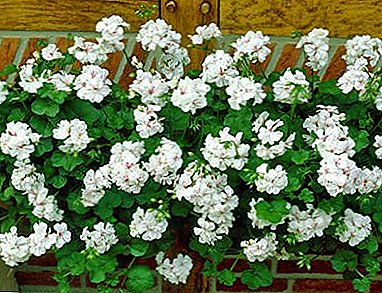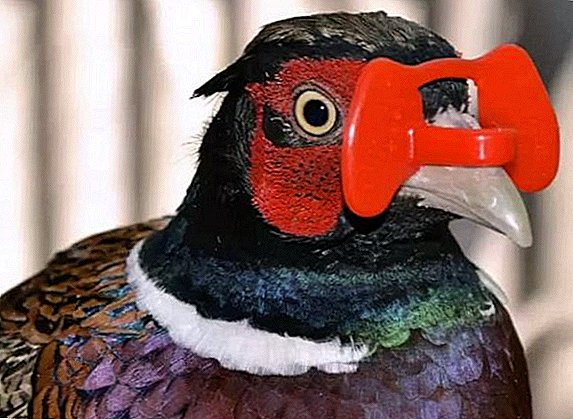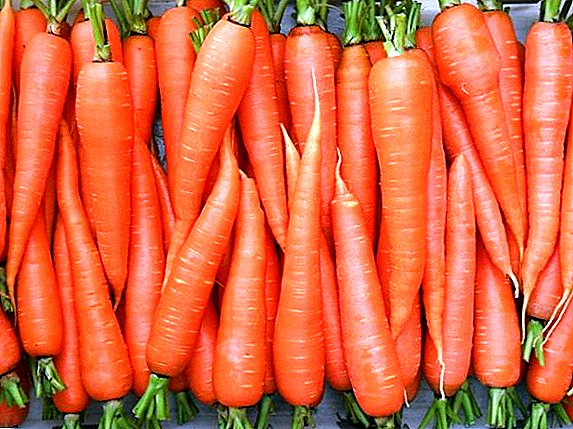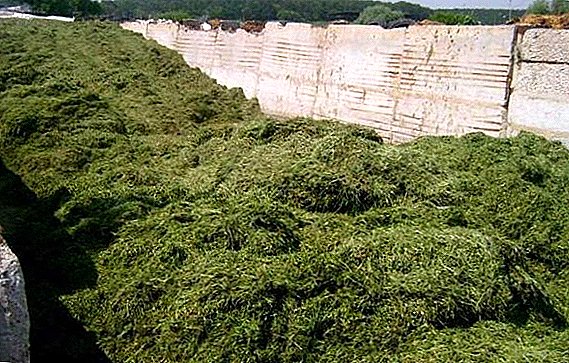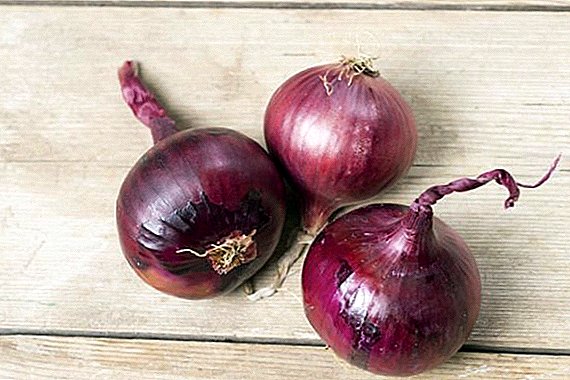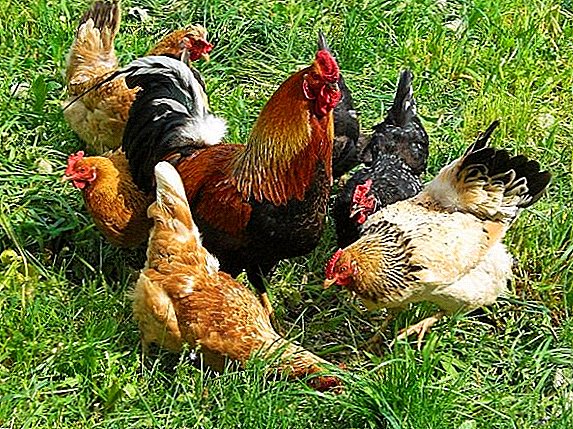 Not being able to place individual poultry houses for layers and for broilers on their plots, poultry farmers think about their joint maintenance. Both directions are good and necessary in their own way, but whether the problems in the content will not make a difference between the egg and meat breed - let's look at this in detail.
Not being able to place individual poultry houses for layers and for broilers on their plots, poultry farmers think about their joint maintenance. Both directions are good and necessary in their own way, but whether the problems in the content will not make a difference between the egg and meat breed - let's look at this in detail.
Is it possible to keep broilers with hens
Shared content is possible, and many see it as a plus, but there are also disadvantages.
Did you know? Before the introduction of a single European currency, the image of a rooster was printed on French coins.
What is the advantage
The undoubted advantage is considered:
- space saving, which is important in small areas;
- the ability to have two types of products - from broiler meat, from laying eggs.

disadvantages
There are more minuses in such maintenance, therefore it is relevant only in those cases when the owner’s site does not allow building two poultry houses. The disadvantages are as follows:
- nutrition - many broiler crosses need special purchased feeds, layers can be given self-made mash and grain. A poorly organized feeding place will lead to aggression;
- development - Chicks at a certain age should be kept separate, otherwise large meat chicks will cripple or trample egg babies;
- walking - if you do not make a division in the territory of walking, fights are possible;
- resting-place - possible fights for roost, crush when trying to get a night.

Features of the joint content of adult chickens
Both chicken directions have both similarities and differences in habits, living conditions and diet. In order for their coexistence to not create problems for the owner or the pets, you need to be able to eliminate conflict of interests to the maximum.
Did you know? On the coat of arms of the city of Petushki, Vladimir region, there are two roosters standing opposite each other.
Similarities between layers and broilers
So, the conditions of detention for both directions:
- dry, insulated, with an effective ventilation system of the chicken coop;
- lack of dampness, drafts, cracks in the walls and floor;
- good layer of clean and dry bedding;
- A sufficient number of feeders and drinkers (better nippelny version);
- the design of closed type feeders so that birds do not scatter food;
- suitable temperature conditions;
- ash baths;
- spacious and comfortable perches for rest;
- lighting and ventilation;
- sanitary processing of the coop;
- clean dishes for food and drink, clean litter;
- vaccination against diseases;
- regular inspection of birds for parasites or diseases;
- disinfection of the room if necessary.
 All of the above conditions are important for both broilers to gain weight and for the productivity of the hens. Cleanliness in the room and in the feeders will not allow the development of conditions for the appearance of pathogenic bacteria.
All of the above conditions are important for both broilers to gain weight and for the productivity of the hens. Cleanliness in the room and in the feeders will not allow the development of conditions for the appearance of pathogenic bacteria.You will probably find it useful to know what to do when broilers fall to their feet, sneeze, wheeze and cough, and also read about how to properly feed broiler chickens with antibiotics and vitamins.
Lack of humidity, drafts and cracks is a precaution against overcooling of birds, from penetration of parasites and small rodents into the poultry house.
Fresh water should always be available.
Ash baths are no less important for birds: while bathing in them, birds clean themselves and skin of feather cover from dirt and vermin.  Kura ash baths are shy birds, so it is advisable to put a chicken coop in a quiet, peaceful place.
Kura ash baths are shy birds, so it is advisable to put a chicken coop in a quiet, peaceful place.
Important! And among the hens, and among the broilers there are aggressive individuals. In order to avoid problems with the newly arrived replenishment, you need to move it at night.
Difference
The most important difference lies in the names of the directions of chickens: laying hens bring the owner eggs, broilers - meat. Different orientation implies differences in the following:
- diet and diet;
- behavior and pastime;
- resting-place.
Poultry farmers are advised to familiarize themselves with the peculiarities of housing and feeding of laying hens, as well as broilers.
Egg hens do not want to gain excess weight, their feeding takes place according to a certain regimen - three to four times a day. At the same time, not fats prevail in the diet, but proteins and vitamins with minerals. Broilers are fed with plenty, including nutritional supplements that contribute to weight gain.  You need to immediately think up the number of feeders, otherwise fast layers will constantly deprive the slow-moving broilers in the feed, in addition, birds can fight for food. The same with drinkers: they should be enough, and that the birds do not overturn the bowls with water and do not pollute them, it is better to make a nipple option.
You need to immediately think up the number of feeders, otherwise fast layers will constantly deprive the slow-moving broilers in the feed, in addition, birds can fight for food. The same with drinkers: they should be enough, and that the birds do not overturn the bowls with water and do not pollute them, it is better to make a nipple option.
One of the important tasks in breeding poultry is the proper manufacture of drinkers and feeders.
Bird walking is also different. Broilers are characterized by sluggishness and passivity, they even eat often in the prone position. The restlessness of the hens and the desire to dig, something to seek out can irritate the fowl. The division of the territory of walking will help to avoid fights between them.  A coop with two paddocks. Also, the slowness and slowness of broilers can provoke aggression of layers. Therefore, it is desirable to make for them two separate input-output - a low manhole for meat pets, a ladder for egg birds.
A coop with two paddocks. Also, the slowness and slowness of broilers can provoke aggression of layers. Therefore, it is desirable to make for them two separate input-output - a low manhole for meat pets, a ladder for egg birds.
It is also advisable to think of separate perches: egg chickens like to rest higher, and broilers will also arrange bedding on the floor - they need perches not high from the floor. In order to avoid a crush when climbing a perch, you need to put a ladder for the egg birds.
Agree that the benefits of comfortable chickens are enormous. Learn how to choose, build and equip a chicken coop, namely: make a perch, nest, ventilation, as well as familiarize yourself with the rules for choosing and using a fermentation bedding for chickens.
Keeping chickens together
With joint keeping of chickens of both directions, it should be noted that individuals differ in the speed of development. Broilers in their monthly age are almost twice as large as their egg counterparts and can trample them. At this age, it is better to plant them or make a partition in a cell. The rest of the conditions are as follows:
- it is better to design the cage with a pallet to make it easier to remove;
- dimensions should be spacious to be able to install a partition;
- the room is dry, warm, without drafts, heated;
- temperature - + 32 ° С;
- lighting - 40 W;
- humidity - not less than 60%;
- from the first days the food is the same, the chicks can be fed together;
- it is better to keep the content separate for a month for safety of layers, and also because of differences in nutrition - food should always be available for broilers, layers are fed four times a day).
 If the territory of your allotment forces you to apply joint cultivation of hens and broilers, you should carefully consider the structure of the house to exclude the slightest possibility of aggression.
If the territory of your allotment forces you to apply joint cultivation of hens and broilers, you should carefully consider the structure of the house to exclude the slightest possibility of aggression.Consider in more detail all aspects of growing broiler chickens at the poultry farm.
Poultry farmers with similar experience are advised to acquire chickens from both directions at the same time and the same age: in this case, they get used to each other more.





